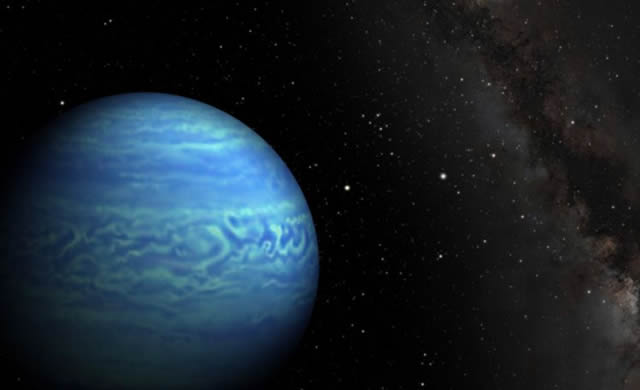
Image Credit: Penn State University/NASA/JPL-Caltech
I Telescopi Spaziali della NASA, WISE e Spitzer, hanno scoperto quella che sembra essere la più fredda “nana bruna” mai conosciuta, un corpo di una stella fioca che sorprendentemente è gelido come il Polo Nord. Le immagini dei telescopi spaziali hanno anche individuato la distanza dell’oggetto che si trova a 7,2 anni luce di distanza, guadagnandosi il titolo come quarto sistema più vicino al nostro sole.
Il sistema più vicino, un trio di stelle , è il più famoso Alpha Centauri, a circa 4 anni luce da noi. “E ‘molto eccitante scoprire un nuovo vicino di casa del nostro sistema solare, davvero così vicino”, ha detto Kevin Luhman , astronomo del Centro della Pennsylvania State University per la ricerca di pianeti extrasolari e di mondi abitabili, University Park. “E data la sua temperatura estrema dovrebbe dirci molto sulle atmosfere dei pianeti che spesso hanno temperature fredde in modo molto simile.” Le nane brune iniziano la loro vita come stelle che collassano in palle di gas, ma non hanno la massa per bruciare il combustibile nucleare e irradiare la luce delle stelle. La nana bruna in questione è denominata WISE J085510.83 – 071.442,5 . Ha una temperatura fredda tra meno 54 e 9 gradi Fahrenheit (da meno 48 a meno 13 gradi Celsius). Precedenti scoperte di nane brune fredde, sempre trovate da WISE e Spitzer, sono risultate avere un temperatura ambiente. WISE J085510.83-071442.5 è stimata avere da 3 a 10 volte la massa di Giove.
NASA’s Wide-field Infrared Survey Explorer (WISE) and Spitzer Space Telescope have discovered what appears to be the coldest “brown dwarf” known — a dim, star-like body that, surprisingly, is as frosty as Earth’s North Pole. Images from the space telescopes also pinpointed the object’s distance to 7.2 light-years away, earning it the title for fourth closest system to our sun.
The closest system, a trio of stars, is Alpha Centauri, at about 4 light-years away. “It’s very exciting to discover a new neighbor of our solar system that is so close,” said Kevin Luhman, an astronomer at Pennsylvania State University’s Center for Exoplanets and Habitable Worlds, University Park. “And given its extreme temperature, it should tell us a lot about the atmospheres of planets, which often have similarly cold temperatures.” Brown dwarfs start their lives like stars, as collapsing balls of gas, but they lack the mass to burn nuclear fuel and radiate starlight. The newfound coldest brown dwarf is named WISE J085510.83-071442.5. It has a chilly temperature between minus 54 and 9 degrees Fahrenheit (minus 48 to minus 13 degrees Celsius). Previous record holders for coldest brown dwarfs, also found by WISE and Spitzer, were about room temperature. WISE J085510.83-071442.5 is estimated to be 3 to 10 times the mass of Jupiter.
Source/Continue reading → NASA.gov





















